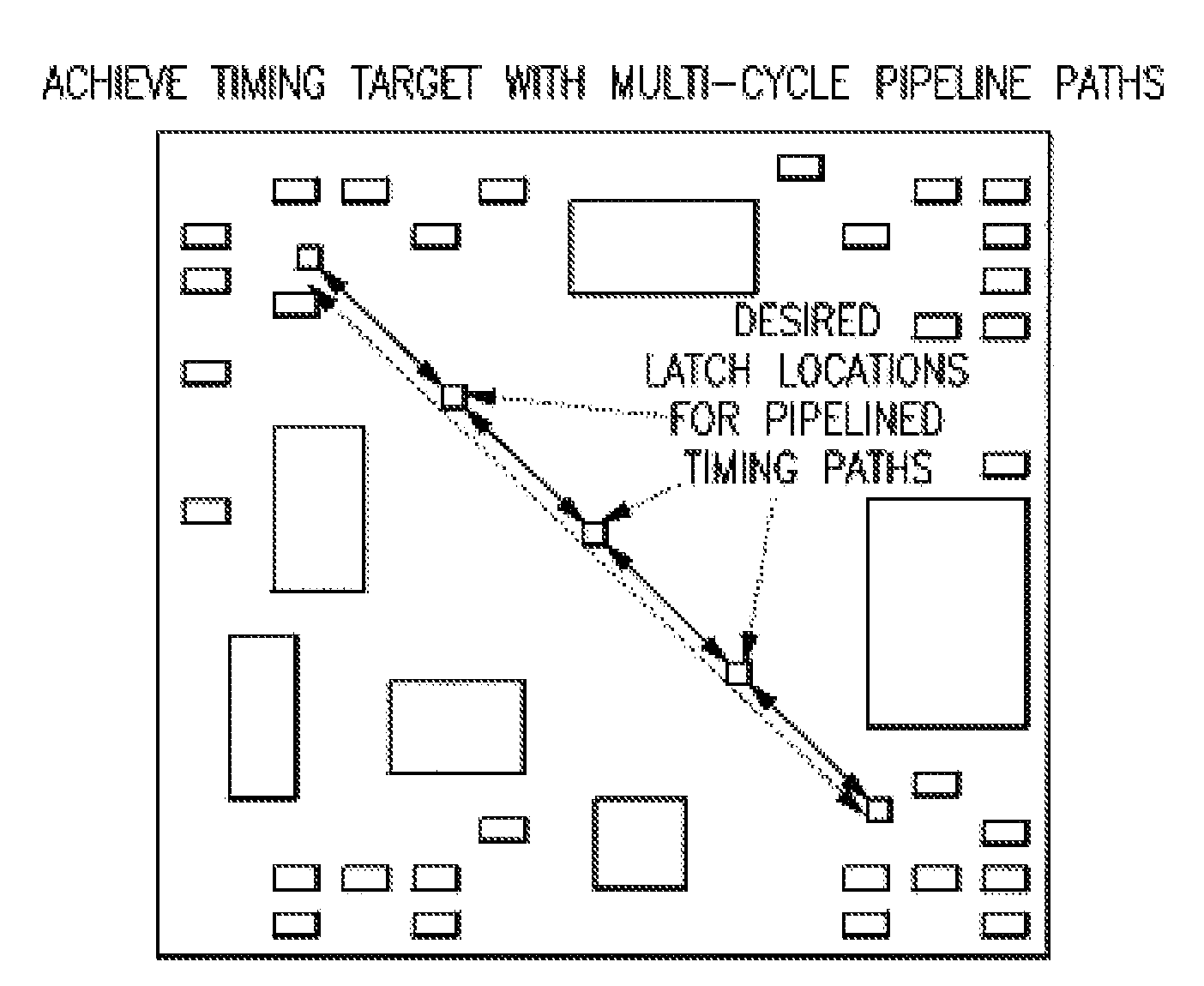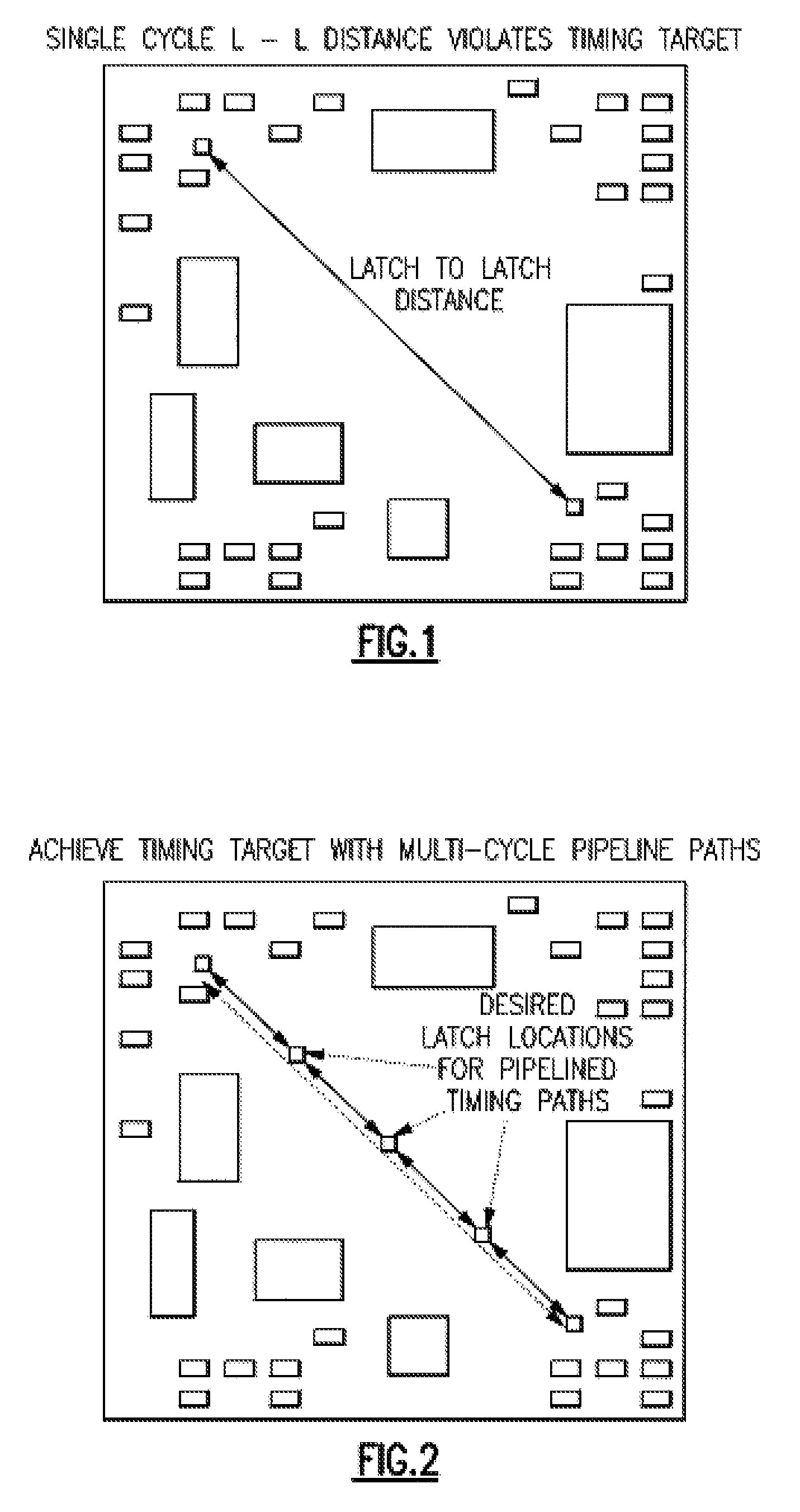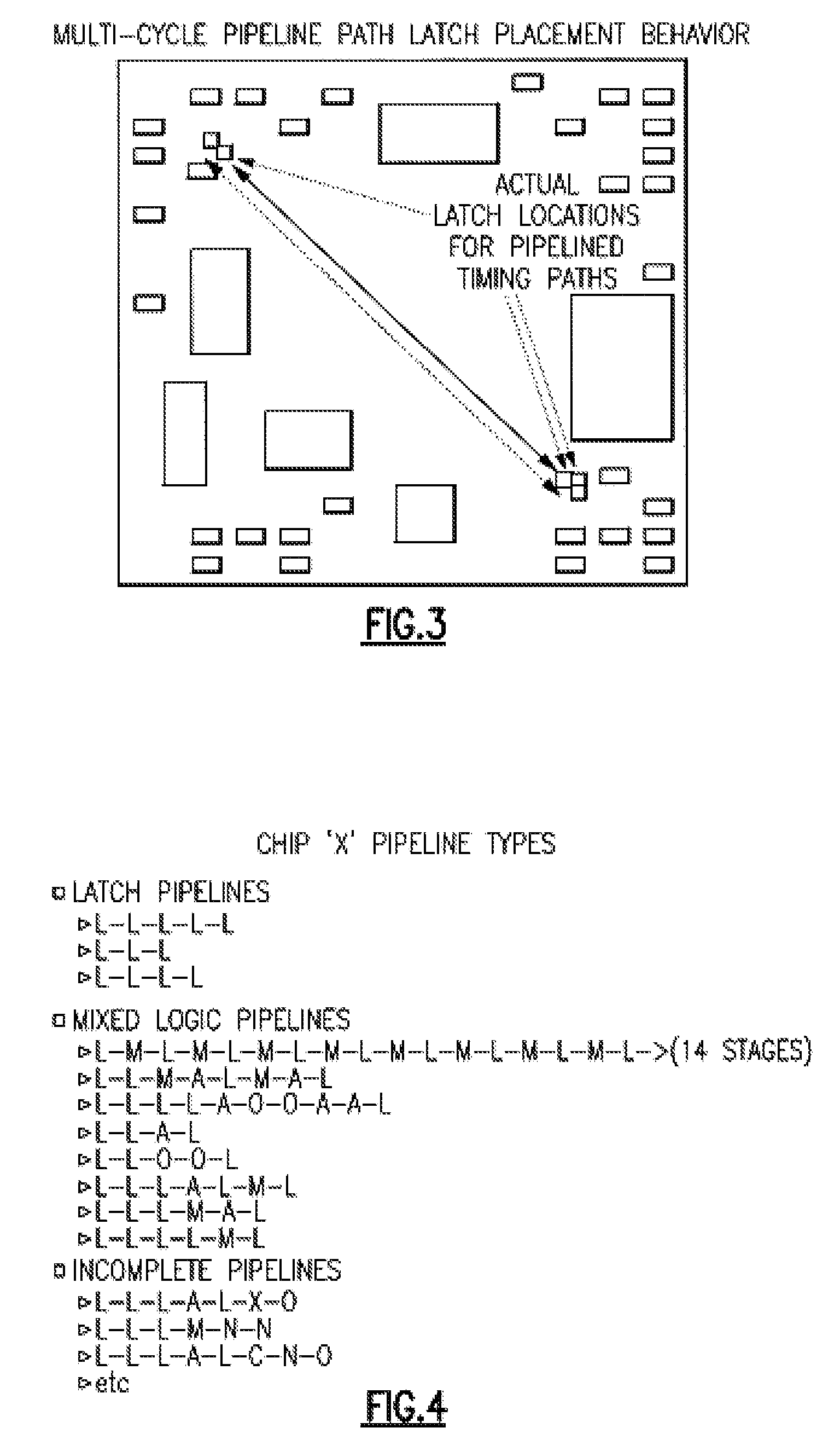Method for Optimizing of Pipeline Structure Placement
a pipeline structure and optimization method technology, applied in the field of performance optimization of integrated circuits, can solve the problems of missing performance objectives, timing violations, and specific logic connectivity scenarios that have not responded well to this methodology approach, and achieve the effect of improving pipeline placement and timing quality, preserving quality, and saving manpower and elapsed tim
- Summary
- Abstract
- Description
- Claims
- Application Information
AI Technical Summary
Benefits of technology
Problems solved by technology
Method used
Image
Examples
Embodiment Construction
[0031]As chip cycle times have decreased, chip sizes and integration levels have increased. These factors have conspired to produce an ever increasing population of excessive path source-to-sink distances (FIG. 1). The ability to close timing on these paths ranges from problematic to impossible. Often these long path distances are non-negotiable due to Floor planning and logic global connectivity constraints. When possible, designers seek to traverse the distance in multiple cycles by means of a sequence (pipeline) of timing paths which meet their individual single cycle time requirements. As a result, pipeline usage is becoming more prevalent
[0032]The designer's desire and expectation is that the individual single cycle paths will be placed in such a way that the multi-cycle distance will be partitioned into equal subdivisions—each subdivision path distance being short enough to support its single cycle timing requirement (FIG. 2).
[0033]Increased usage of pipeline structures has gi...
PUM
 Login to View More
Login to View More Abstract
Description
Claims
Application Information
 Login to View More
Login to View More - R&D
- Intellectual Property
- Life Sciences
- Materials
- Tech Scout
- Unparalleled Data Quality
- Higher Quality Content
- 60% Fewer Hallucinations
Browse by: Latest US Patents, China's latest patents, Technical Efficacy Thesaurus, Application Domain, Technology Topic, Popular Technical Reports.
© 2025 PatSnap. All rights reserved.Legal|Privacy policy|Modern Slavery Act Transparency Statement|Sitemap|About US| Contact US: help@patsnap.com



